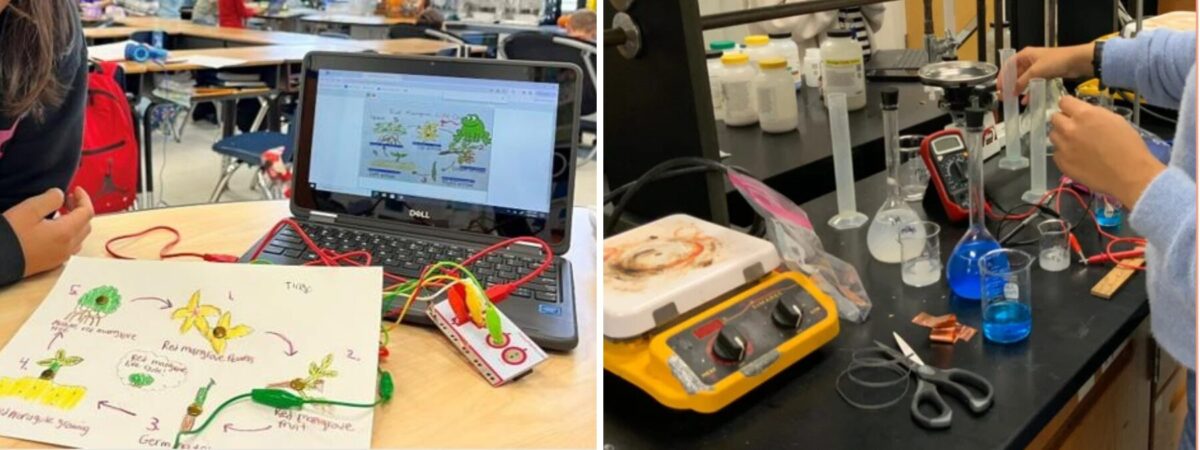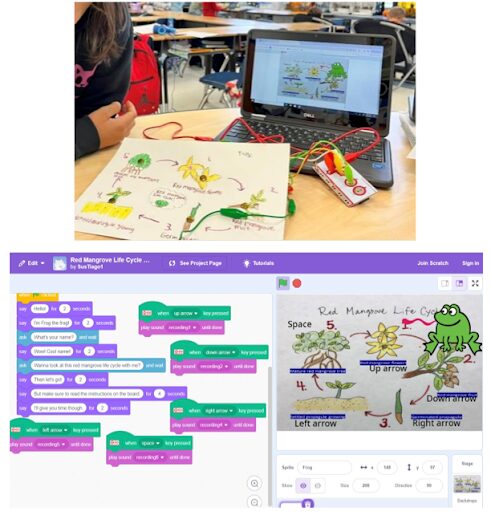
The students are members of the Everglades Ambassador Club, which focuses on promoting the importance of the Everglades. For their project, the students used Scratch, Minecraft, and Canva to teach other students about the significance of the Everglades. “Since we started third grade, we’ve learned so much about these applications! We’ve become much better at using them to communicate what we have learned in a fun way, ”said Aadhira.

The Scratch and Makey Makey integration that demonstrates the life cycle of a red mangrove, along with a sample of the block code
The students hope to continue building on the success of their project. “We would love to create an Everglades corner in our media center so 750 students from our school can learn about the Everglades. We would like to create an Everglades backdrop in Canva that we would enlarge to place in the corner. We would also create important animals and plants from the Everglades and order big cutouts of them to add to the scene and make it look 3D […] we would buy books about the Everglades. Additionally, we would display our Scratch and Makey Makey projects in the corner for other students to enjoy.” Aadhira said.
“Through immense research we came upon lignin (a complex polymer, being a by-product of paper, having a high affinity for electrons). Through this discovery, we coated the battery’s anode to test the voltage output through the use of different anode electrolytes. Our project had seen an increase of voltage when coated with this material and has reached the final stage of the experimental process,” Madison said. “Its potential real life application can have a significant impact on battery performance and environment sustainability.”
The team says that this method is more sustainable than lithium and lead acid-based batteries, which are heavy metals that pollute the planet and have to be mined, raising ethical concerns about human labor, the environmental cost, and the impact on local economies.
“Our novel lignin-coated anode provides an impressive way to not only be environmentally suitable by using the second most ambient biological polymer in the world but also a more effective way that provides higher voltages compared to the original methodology.” Madison said. “We have dedicated numerous hours to this project because we genuinely believe in the success of this project, not just in competitions, but in real-world applications. We both believe that as a society it is our moral responsibility to find more efficient and sustainable ways to solve current problems.”